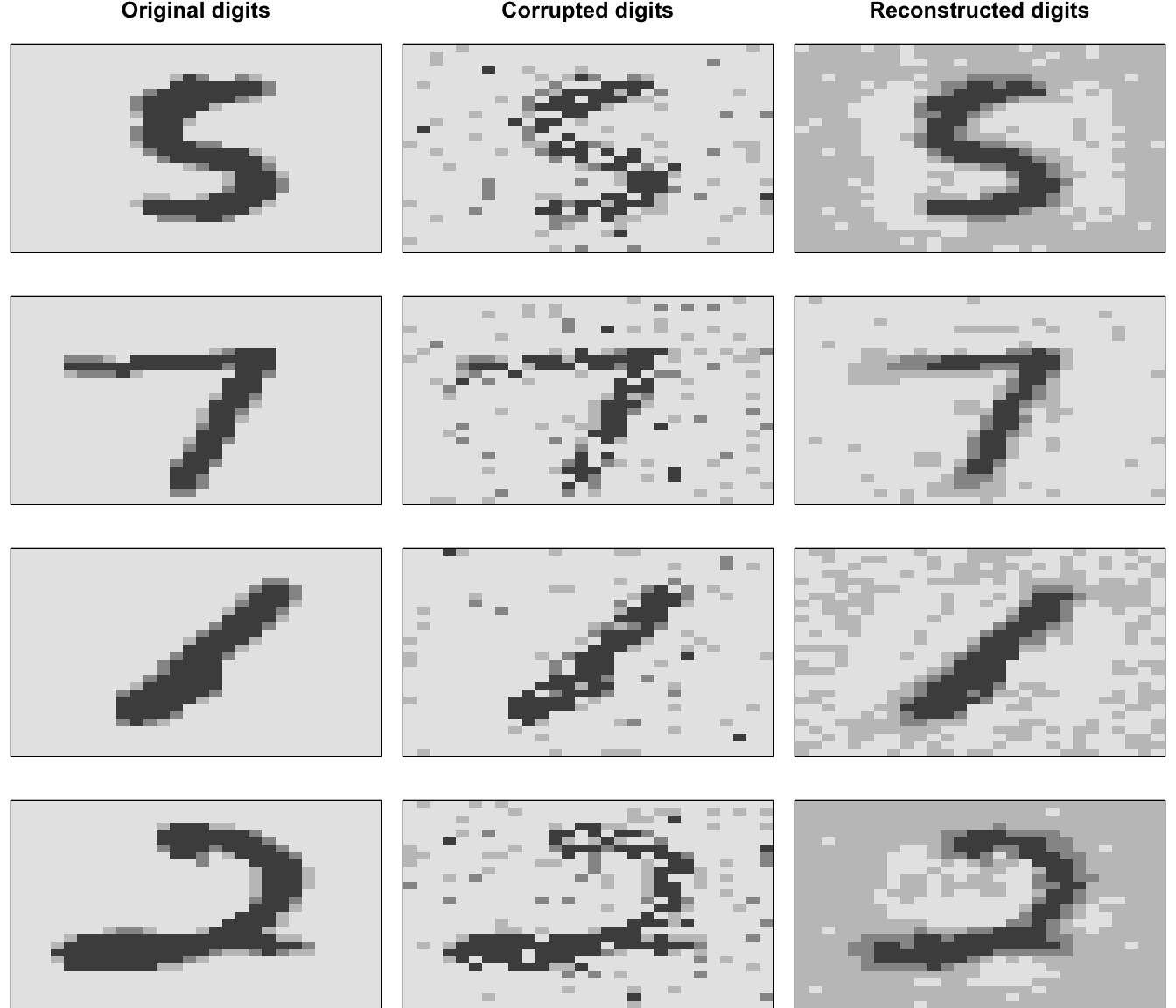19.5 Denoising autoencoders
We train the autoencoder to reconstruct the original input from a corrupted copy of it, which forces the codings to learn more robust features even when the number of codings is greater than the number of inputs.
In this case:
- The encoder function should preserve the essential signals.
- The decoder function tries to undo the effects of a corruption.

19.5.1 Corruption process
- Randomly set some of the inputs (as many as half of them) to zero or one.
- For continuous-valued inputs, we can add Gaussian noise.
19.5.2 Coding example
- Train the model.
denoise_ae <- h2o.deeplearning(
x = seq_along(features),
# Currupted features
training_frame = inputs_currupted_gaussian,
# Original features
validation_frame = features,
autoencoder = TRUE,
hidden = 100,
activation = 'Tanh',
sparse = TRUE
)- Evaluating the model.
# Print performance
h2o.performance(denoise_ae, valid = TRUE)
## H2OAutoEncoderMetrics: deeplearning
## ** Reported on validation data. **
##
## Validation Set Metrics:
## =====================
##
## MSE: (Extract with `h2o.mse`) 0.02048465
## RMSE: (Extract with `h2o.rmse`) 0.1431246